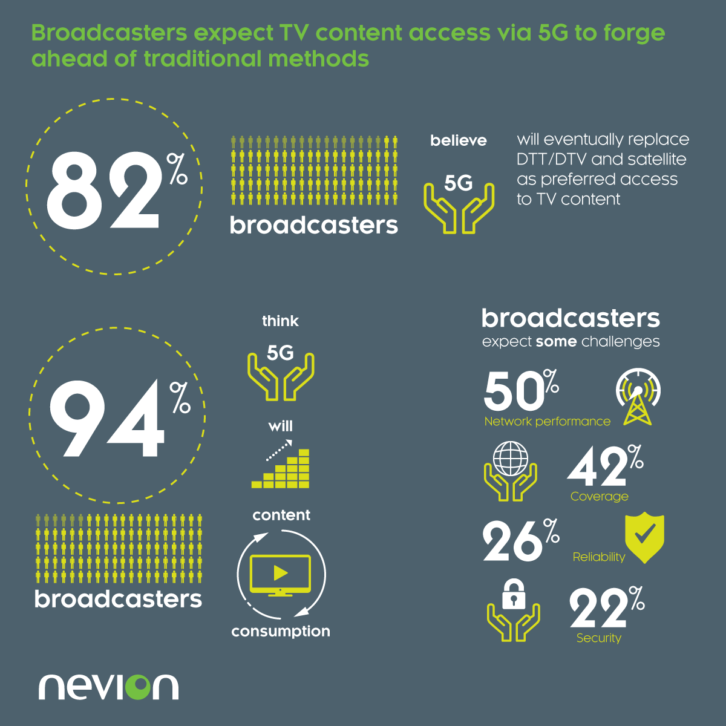A new global survey of broadcasters has found 82 per cent believe cellular networks like 5G will eventually replace traditional broadcast distribution such as DTT/DTV and satellite as the preferred way to access TV content.
Over a third (37 per cent) expect this change to happen over the next 1-2 years.
The survey, conducted by Nevion, found that 10 per cent of broadcasters still anticipate that it will take more than three years for 5G to overtake traditional services but 94 per cent of broadcasters agree that 5G will likely increase the consumption of content.
Further findings include 50 per cent of the broadcasters surveyed think the biggest challenge of using 5G will be network performance issues and coverage issues (42 per cent). This is followed by issues with reliability (26 per cent) and network security (22 per cent), as well as some broadcasters expressing concern about the environmental impact of 5G.

Andy Rayner, chief technologist at Nevion, said, “5G technology can potentially deliver OTT broadcast services with the quality required not only for mobile devices, but also for TV screens at home. This could mean, as our research uncovered, that 5G is eventually likely to usurp DTT for consumers at home as well as on the move. In the long term, it is likely that 5G mobile technology could become the standard means to deliver terrestrial television. However, it is expected that both DTT and 5G delivery (when ready) will co-exist for a reasonable time.”
“Ultimately, we are only just scratching the surface of 5G, and although broadcasters already see its potential value, at this stage industry-wide explorations into the technology are ongoing,” added Rayner. “It is too soon to say exactly at which point in the broadcast chain 5G will provide the most value. As such, broadcasters currently delivering with DTT will need to work with experts to follow the evolution of 5G broadcast capability.”







